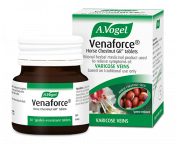Introduction to varicose vein prevention
Varicose veins are a common problem affecting approximately 30% of adults. Although some people are more prone to developing the condition, particularly those with a family history of varicose veins, there are certain measures you can take to help prevent the problem.
Prevention measures
- Exercise - Veins need daily activity so exercise is key to healthy veins. Regular contraction of muscles in your calves helps to move blood from your legs back to your heart. Brisk walking (even 10 minutes each day), cycling or swimming are all good for getting the blood in your legs flowing. Check out our 5 exercises for preventing varicose veins for more ides.
- Elevate - Take 10 minute breaks each day to raise your legs above the level of your heart. A simple way of achieving this is by lying down and resting your legs on a stack of pillows
- Control your weight - Being heavier than you should be puts unnecessary pressure on your legs and makes it more difficult for blood in your legs to return to the heart
- Breathe - Make sure you breathe deeply and often to get oxygen into your bloodstream which will in turn, help your circulation
- Wear loose clothing - Tight clothes around your calves or groin can restrict or interrupt the normal flow of blood from your legs back to the heart
- Avoid high heels - These may look good, but are bad for your circulation. Low-heeled shoes make the muscles in your calves work better
- Avoid very hot baths - Heat dilates (widens) your veins and slows down the circulation in your legs in a number of ways. This also applies to saunas and long periods of sunbathing.
- Shower your legs with cold water - The sudden change in temperature helps ‘exercise’ the veins, ‘shocking them’ to contract
- Do not cross your legs - This obstructs the circulation and prevents blood from flowing back towards the heart. If you are standing for a while, make a point of changing your position, shifting from one leg to another as often as you can. Try some leg exercises whilst standing up, such as wiggling your toes as often as possible
- Prevent constipation - Make sure you have plenty of fibre, fruit and vegetables in your diet so that you move your bowels at least once a day.








